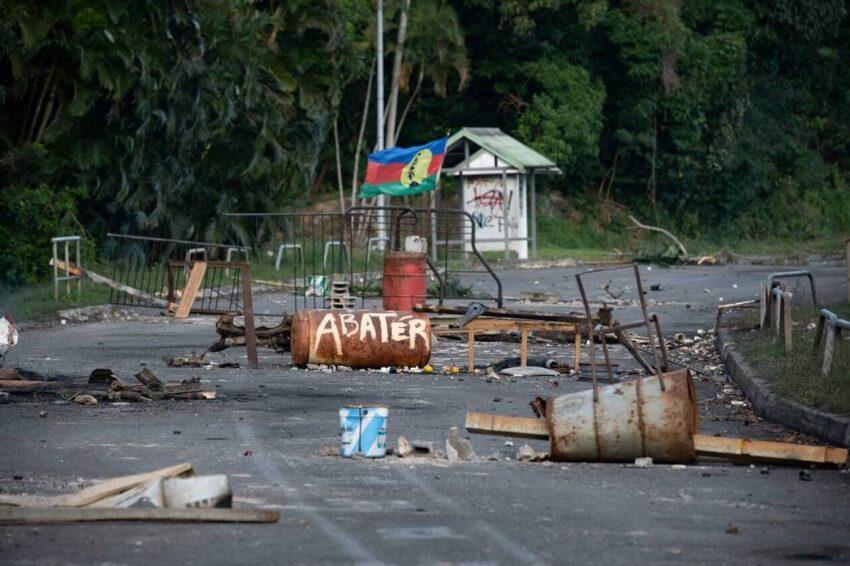
22,000 kilometres separate Nouméa from Marseille by sea (via the Panama Canal and Gibraltar), and 17,000 kilometres separates Kanaky from Paris by air. This is the distance that seven Kanak activists were forced to travel in chains for a thirty-hour flight before being taken to several mainland prisons, after being rounded up on June 19 by the elite troops of the French state. While the South Pacific archipelago has been gripped since May 13 by a Kanak social insurrection that has largely escaped its political leaders, these seven women and men (and four others) are accused of being at the origin of it through the Field Action Coordination Cell (CCAT)*.
As soon as the nocturnal “deportation” by military plane of the members of the CCAT, to a motherland that they reject was known, needless to say that the embers of the Kanak insurrection were rekindled with renewed vigour. Sunday and the following days saw roadblocks (re)erected everywhere, not to mention the numerous attacks on the police or the fires that hit new institutional buildings, shops or villas, including and notably outside Greater Nouméa (i.e. “in the bush”). In addition, in the face of this wave of repression that has hit it hard, the CCAT, which has often been overtaken by the insurgents in recent weeks, launched two new slogans in a press release on 23 June: “the [nickel] mines will remain closed”, and “we promise strong disruptions” during this last week of legislative elections.
New roadblocks and fires
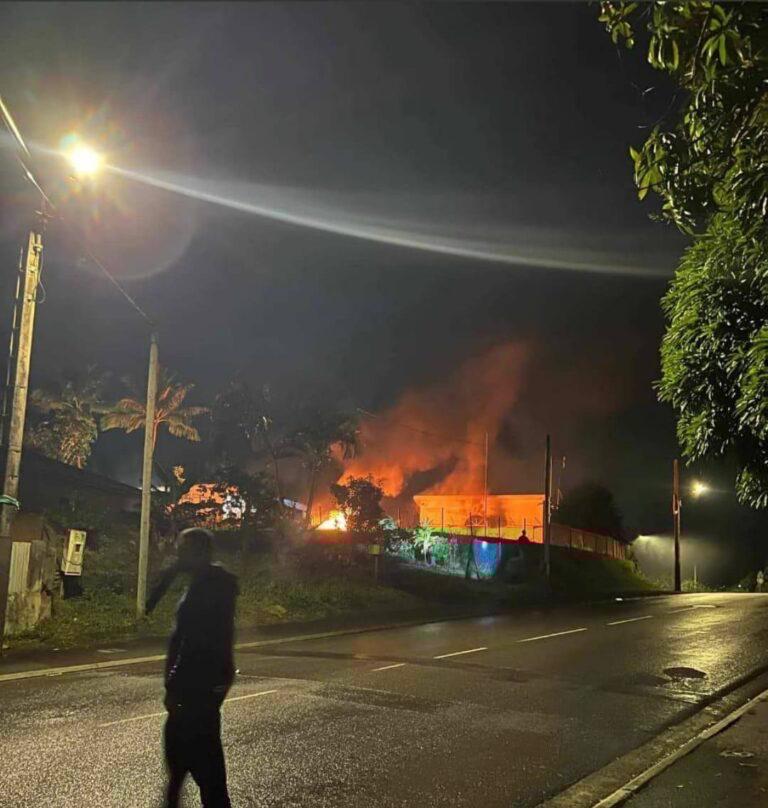
Over the past three days and the intensification of hostilities, we can list in a non-exhaustive way:
- in Dumbéa (greater Nouméa, 35,000 inhabitants), the municipal police station and its two vehicles parked in the courtyard were burned, as were the new offices of the Social Housing Fund (FSH). In addition, one of the police pick-ups that came to confront the rioters had an accident, and quickly found itself surrounded by the insurgents and then set on fire in turn. On Sunday around 3 a.m., the Jack Mainguet school was also set on fire: the flames ravaged part of the canteen, as well as the teachers’ room and the principal’s office. In all, no less than four armored vehicles of the gendarmerie intervened in Dumbéa, including a Centaur.
- In Mont-Dore (greater Nouméa, 27,000 inhabitants), where a lot of shops and other things have already been looted and destroyed in six weeks and where Europeans now only go to the capital with the help of a small maritime shuttle because of the roadblocks, the gendarmes have again come under fire while trying to extract them.
- In Païta (Greater Nouméa, 25,000 inhabitants), there was a great deal of destruction: the building of the Special Intervention Detachment of the National Gendarmerie was reduced to ashes. The same goes for the Ohlen and Gustin schools (four classrooms, four interclasses, two nap rooms and two motor skills rooms). As for the Louise-Michel college, which for once lives up to its name, it is the teachers’ room and a classroom that burned down. Each time, the firefighters were unable to intervene quickly, because the roads and streets were blocked by the insurgents. A boat was also set on fire in Port-Laguerre.
- In Koumac (4000 inhabitants, which means “hard/stubborn heads” in the Pwaxumak language), located in the very north of Grande Terre, it is the town hall that has partially burned down.
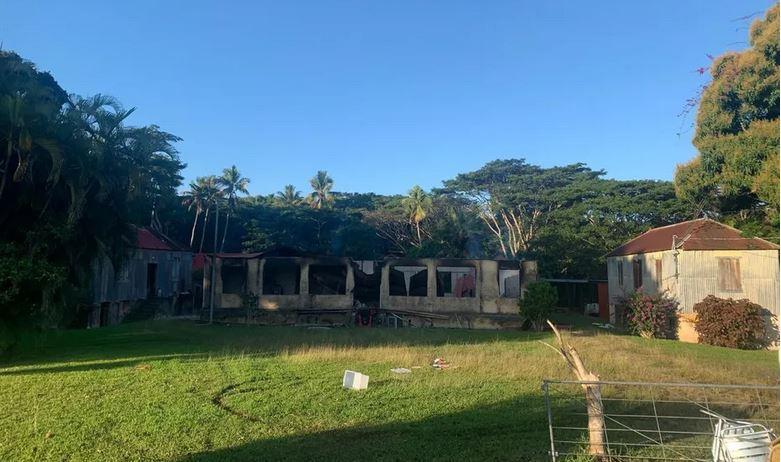
- In Fonwhary (municipality of La Foa, 3500 inhabitants on the west coast), a 120-year-old historic colonial house was reduced to ashes.
- In Bourail (on the west coast, 5000 inhabitants), two large docks in the area of the industrial zone of Nandai (belonging to Matériaux Center and Discount) were burned down and two settlers’ villas suffered the same fate, culminating in exchanges of fire between one of the latter and “barragists”. According to the gendarmes, there are up to 300 Kanak insurgents on the roadblock blocking this bush village, a situation “never seen before”. The town is therefore supplied by sea, with the help of the New Caledonian government’s scientific vessel L’Amborella.
- In Lifou (Loyalty Islands), insurgents broke into the tarmac of the Wanaham airfield during the night, after cutting a fence. Then they set fire to large tires on the runway, which degraded it and led Air Calédonie to cancel all its flights to the island. And as the ship that serves as a maritime shuttle is being refitted until July 4, Lifou is therefore cut off from the rest of New Caledonia. In addition, on the Wé side, the only ready-to-wear shop on the small island was set on fire on Monday around midnight.
- In Maré (Loyalty Islands), the gendarmerie brigade in Tadine was attacked all night until 4 a.m. (Sunday to Monday), with an attempted intrusion and molotov throws. As for the La Roche college, it has still not reopened, after being partially burned down several days ago.
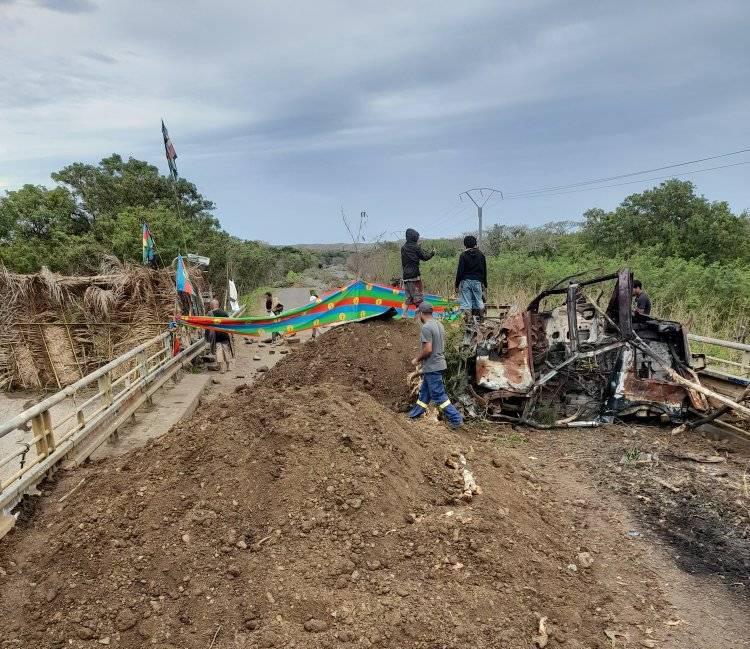
The proceedings against the CCAT
After their arrest on the morning of June 19, the 11 members of the CCAT spent 72 hours in police custody, then all were presented to two investigating judges at the Nouméa courthouse on Saturday June 22, who in particular indicted them for “criminal conspiracy with a view to preparing a crime” and “participation in a group formed with a view to preparing violence against people or destruction of property” (act committed on 1 November 2023 to June 19) as well as for “complicity in attempted murder at Mont Dore, Nouméa, Dumbéa and Hienghène; organized gang theft with weapon, in Nouméa, Dumbéa, Mont-Dore and Païta; organized gang destruction of the property of others by means dangerous to people” (acts committed from June 12 to 19 during the insurrection). Charges which make them face life imprisonment, for having “defined, prepared, planned, implemented a violent action plan with the aim of destabilizing the territory” according to Yves Dupas, the public prosecutor of Nouméa.
The investigating judges and the prosecutor’s office then presented their requests for deprivation of liberty, then a JLD obviously followed them: of the 11 arrested, 2 were placed under judicial control (including Darewa Dianou, son of Alphonse Dianou, murdered by the military in the Ouvéa cave in 1988); 7 were immediately put on a specially chartered military plane during the night, to be imprisoned as a preventive measure 17,000 kilometers away; and the last 2 (Gilles Jorédié and Joël Tjibaou, son of the historic president of the FLNKS) had asked for a deferred debate to prepare their defense before the JLD. Today, Tuesday, June 25, they were back in front of the judge of freedoms, and like the first seven were incarcerated, but this time in the Camp-Est prison (Nouméa)…
While waiting to know more, here are already the prisons in mainland France where the seven members of the CCAT have been incarcerated, in front of which rallies were also held on Monday, June 24 at 6 p.m., at the call of the MKF (Movement of the Kanak in France): Christian Tein is in Mulhouse-Lutterbach (Haut-Rhin); Brenda Wanabo Ipeze is in Dijon (Côte-d’Or); Guillaume Vama is in Bourges (Cher); Steeve Unë is in Blois (Loir-et-Cher); Yewa Waetheane is in Nevers (Nièvre); Dimitri Qenegei is in Villefranche-sur-Saône (Rhône); Frédérique Muliava is in Riom (Puy-de-Dôme).
The “shock” of a historic measure
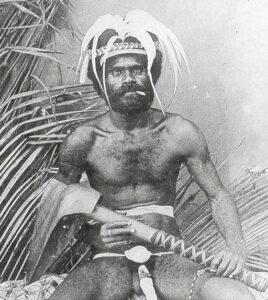
The French state’s choice to transfer to the other side of the planet Kanak people who resisted its domination was a reminder not only that New Caledonia was a colony of settlement (with 21,600 convicts from mainland France who had been “transported” to the site and 3,700 who had been “relegated” there at the end of the 19th century), but also that it has long been a land of political “deportation” in both directions.
4200 communards were sent to the penal colony of New Caledonia after 1871, quickly followed by various revolts against the French colonial power: more than a hundred Algerian Kabyles from 1874, 750 prisoners (political or pirates) rounded up in the penal colony of Poulo Condor in Cochinchina (Viet Nam) in 1891 and fifteen others in 1914 accused of having committed attacks against French commanders in Hanoi, the Comorian rebels in 1891 or the Polynesians opposed to the French annexation in 1897. And in the other direction, when they were not massacred by the thousands, more than 200 Kanak guilty of refusing the colonial order were regularly deported far from their lands between 1855 and 1929, notably to Tahiti, to the penal colony of Vietnam, to the New Hebrides (Vanuatu) and to Obock, on the Somali coast (Djibouti).
Let us also recall that following the adoption by referendum of the Matignon agreements (1988) signed between separatists, loyalists and the French state, which put an end to the Kanak uprising of the 1980s (the “Events”), one of its articles included an amnesty measure. On November 18, 1988, nearly a hundred prisoners were released from jail, including 26 Kanak insurgents incarcerated in the Paris region (as a preventative measure for having taken up arms against the gendarmes and soldiers on the island of Ouvea). It is in this sense that we can understand the shock felt on site, translated by the press release from the Caledonian Union released on June 23 following the transfer of members of the CCAT to mainland prisons: “the deportation of officials and of activists is a habit implemented by France since its takeover in 1853. It is proof that in 2024, this country will resort to practices from another time.” In this case, prison measures of forced exile which have a long history and have not been implemented for over thirty-five years.
As for the CCAT directly, which held a solemn press conference in La Conception (Mont-Dore) on June 25, it is perhaps the word of Jhon-Rock Tindao, president of the customary council of the Drubea-Kapumë area, that sums it up best: “This great inferno is a cry of revolt of more than 10,000 young people who see their dreams of independence collapse with the thaw of the electorate… The sine qua non condition for us to be able to bring about a climate of peace, for there to be a discussion and for all the CCAT relays to be able to go on half-mast momentarily, is the return of Christian Tein and all the comrades imprisoned in mainland France because they are considered to be arbitrary arrests.”
All things considered, it seems that for a long time to come, the precious nickel so coveted by the French state to power the batteries of its green capitalism, a mineral that the Kanaky abounds in, is not about to arrive safely. This is at least one more good reason to be in solidarity with the insurgents who ravage the economic structures of the archipelago day after day…
* Note on the CCAT (see below)
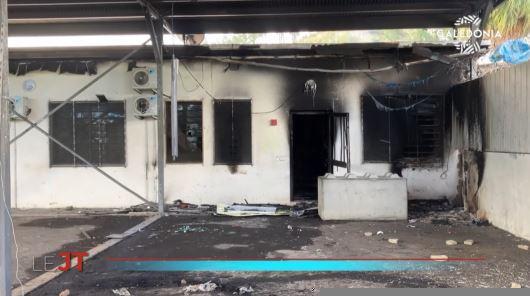
* Chronological note on the Kanak parties and the rise of the CCAT until the insurrection of May 13, 2024:
The FLNKS (Kanak and Socialist National Liberation Front), created in 1984, now brings together four main parties: the Caledonian Union (UC), the Kanak Liberation Party (Palika), the Oceanian Democratic Rally (RDO) and the Progressive Union in Melanesia (UPM). The latter have co-managed with the loyalists the local New Caledonian government and certain economic interests (including mining) since the Nouméa Accords in 1998, and are often challenged by part of the Kanak population for their corruption or their distance from the objective of independence, particularly by the young urbanized people of Nouméa, or even their gradual integration into the Western-capitalist system by others (especially in tribes).
In November 2023, the Coordination Cell for Field Actions (CCAT) was created as an initiative of the UC launched at its congress on the Isle of Pines, which was joined by six pro-independence organizations outside the FLNKS: the USTKE (Union syndicale des travailleurs kanak et exploités, created in 1981 and a member of the FLNKS from 1984 to 1989) and CNTP (National Confederation of Pacific Workers, split from the first dating from 2016), the Labour Party (created in 2007, close to the USTKE), the MOI (Movement of Oceanian Independentists, created in 2019 and composed of Wallisians and Futunians living in Kanaky), Dynamique Autochtone and the Dynamik Unitaire Sud (DUS, split from the Palika dating from 2011).
For their part, the three other FLNKS parties had already created a Nationalist and Citizen Committee (CNC) in 2020, again to broaden their base (on the occasion of the 2nd local referendum on independence), which led the CCAT and the CNCs to work together from November 2023 by mobilizing all the Kanak in the tribes and in Nouméa, to prevent the French government from reforming the local electorate, which has been frozen since the Nouméa Accord (1998). By deciding to open the latter to thousands of mainland residents who have arrived in Kanaky since that date, the State considered itself to have emerged from the period of the Nouméa Accords, which provided for three referendums on self-determination, and respectively gave 43% for independence in 2018, 47% for independence in 2020, and we don’t care how much in 2021 since it was boycotted by the Kanak (then in a period of mourning for the dead of covid-19).
Phase 1 of this mobilization against the thaw of the electorate first consisted of organizing peaceful demonstrations, which grew gradually, from 3000 people at the end of November to 15,000 on March 28, until reaching about 60,000 people on April 13 in Nouméa (for 270,000 inhabitants, 41% of whom were Kanaks). Faced with the growing success of the demonstrations, the 42nd Congress of the FLNKS finally decided in March 2024, two months before the start of the insurrection, to open up to all these other pro-independence components, and a working group was set up to modify the Front’s charter.
Then came phase 2 of the mobilizations, called “10 days for Kanaky”, in the week before the vote on the thaw in the National Assembly (the one in the Senate had occurred on April 2), which was to be held on May 13 and definitively adopt this bill. There were then more demonstrations during this period, some nickel mines began to be blockaded, and a USTKE strike paralyzed the ports and docks, but also the airport of Noumea. Finally, the so-called “2.5” phase began on Sunday, May 12, with the aim of setting up “filter barriers” throughout the archipelago, disrupting the economy of the capital Nouméa. Except that from Monday, May 13, a bit like the yellow vest movement where self-organized groups blocked roundabouts during the day and left at night to burn targets that seemed adequate to them, everything accelerated.
In Nouméa and its suburbs, where the urbanized Kanak youth are both disgusted with the independence political parties and suffer more than any other misery, racism and humiliation, the spark of the forceful passage of this famous thaw exploded into a marked social insurrection by all-out fires and looting. On May 16, the number of insurgents was estimated at around 10,000 by the authorities (5,000 in greater Nouméa, i.e. Dumbea, Mont-Dore and Païta/ and 4,000 in the capital). The CCAT, the FLNKS, the customary authorities, the USTKE or the Caledonian Union then denounced the destruction and looting or called for calm, trying to enforce it on the dams, but nothing has done until today, causing 1.5 billion euros of damage by ruining a New Caledonian economy already weakened by the drastic fall in nickel prices. As for the French state, it decreed a state of emergency between May 15 and May 28, signing 33 administrative search orders (OPAs) and 29 house arrests, including 25 against members of the CCAT (i.e. “10 mafia leaders of this small group that commits murder and looting” according to the Minister of the Interior) or sending 3500 cops and soldiers to the scene. The insurrection has been ongoing for seven weeks.
Finally, on June 15, 2024, one month after the beginning of the insurrection, the 43rd Congress of the FLNKS was held in Koné, which was supposed to integrate the six new components. Faced with the presence of nearly 300 members of the CCAT who had come in large numbers, who had held their first general assembly in Bourail and intended to make themselves heard as representatives of the “barragists” and the rank and file in struggle without being satisfied with their 10 allocated places, the FLNKS congress was finally postponed after a few hours.
And last but not least, during President Macron’s lightning visit to Kanaky on May 23, ten days after the beginning of the insurrection, he had met several pro-independence components of New Caledonia, that is to say not only the FLNKS parties, but also Christian Tein of the Coordination Cell for Field Actions (CCAT), despite his house arrest. A month later, strengthened by the duplicity linked to any power (a fortiori colonial), he decided to send him to the bottom of a distant jail, with six of his comrades…